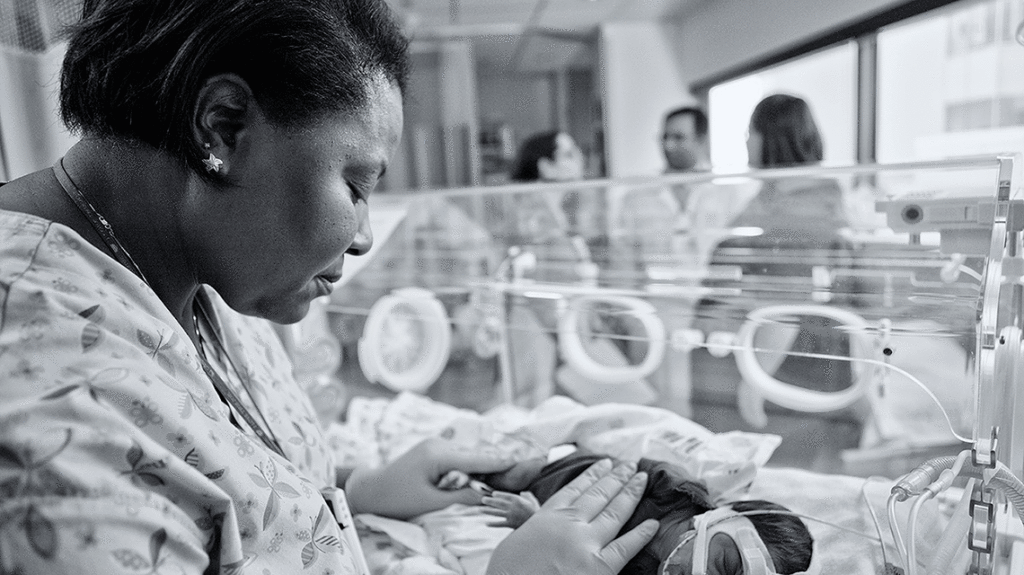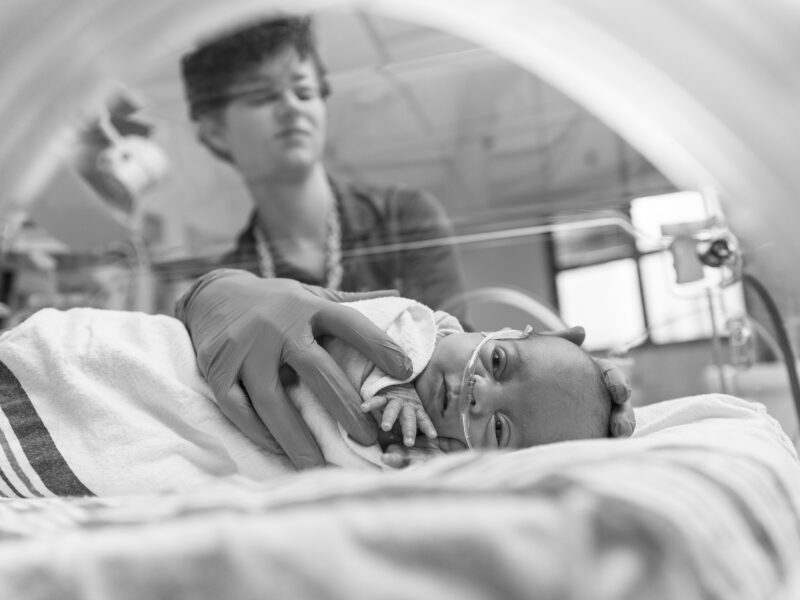Nephrotoxic Medications in the NICU
Nephrotoxic Medications in the NICU https://pediatricsnationwide.org/wp-content/uploads/2021/02/022812ds391HRBW_NICU-for-web-header-1024x575.gif 1024 575 Mary Bates, PhD Mary Bates, PhD https://secure.gravatar.com/avatar/c6233ca2b7754ab7c4c820e14eb518c8?s=96&d=mm&r=g- July 28, 2022
- Mary Bates, PhD

New study shows treatment with nephrotoxic medications in newborns is associated with the development of acute kidney injury, yet remains common.
A multicenter analysis of nearly 50 pediatric hospitals showed that newborns are commonly treated with nephrotoxic medications and, troublingly, the prevalence of acute kidney injury is higher in newborns treated with these drugs. The authors say the findings demonstrate the need for initiatives to reduce nephrotoxic medication exposure in very young infants.
To investigate treatment with nephrotoxic medications in newborns, researchers from Nationwide Children’s Hospital conducted a retrospective study using the national Pediatric Hospital Information System (PHIS) database. They evaluated the use of 37 nephrotoxic medications, including certain antibiotics and nonsteroidal anti-inflammatory drugs (NSAIDs), across 49 pediatric hospitals.
“We found a very high rate of nephrotoxic medication treatment in the NICU,” says Tahagod Mohamed, MD, a pediatric nephrologist at Nationwide Children’s and one of the study’s authors. “About 75% of neonates in this cohort were treated with at least one nephrotoxic medication.”
Treatment with nephrotoxic medications was most common in the smallest and most immature newborns, with 90-95% of infants born at ≤ 28 weeks or < 1000 g exposed to one or more nephrotoxic drugs. In addition, most treatments occurred in the first three postnatal days.
The analysis also revealed that the odds of developing acute kidney injury were higher in newborns who were treated with nephrotoxic medications.
Study coauthor Jonathan Slaughter, MD, MPH, a neonatologist and principal investigator in the Center for Perinatal Research within the Abigail Wexner Research Institute at Nationwide Children’s, says that neonatologists need to consider how often they are giving these drugs to newborns.
“We now know that these nephrotoxic NSAID drugs are really not indicated for the vast majority of babies in the first three days after they’re born,” says Dr. Slaughter, who is also an associate professor of pediatrics at The Ohio State University College of Medicine (OSU COM). “And we know we can use a lot less in the way of antibiotics. Even when we need to treat a baby prophylactically while evaluating for possible infection, we can often reduce treatment from 48 hours to 24 hours.”
Dr. Mohamed says that when treatment with nephrotoxic medications cannot be avoided, clinicians can still reduce the effect of the drugs on kidney health by monitoring patients for early signs of kidney problems.
“One of the initiatives here at Nationwide Children’s is called Nephrotoxic Acute Kidney Injury (NAKI),” says Dr. Mohamed, who is also an assistant professor of Pediatrics at OSU COM. “NAKI is an electronic health records-driven system that alerts the clinician to check kidney function if a patient is on several nephrotoxic medications at a time.”
Dr. Mohamed is also researching new biomarkers to more quickly and easily detect acute kidney injury in newborns. For example, one new biomarker that is currently available at Nationwide Children’s, neutrophil gelatinase-associated lipocalin (NGAL), can be used to assess signs of kidney injury in urine.
Dr. Slaughter says that Nationwide Children’s can serve as an example to other centers trying to reduce the use of nephrotoxic medications and use them more safely when they are necessary.
“Hopefully, other NICUs around the country are moving in this direction but we at Nationwide Children’s are leading the way,” he says.
Reference:
Mohamed TH, Abdi HH, Magers J, Prusakov P, Slaughter JL. Nephrotoxic medications and associated acute kidney injury in hospitalized neonates. Journal of Nephrology. 2022 Feb 15. doi: 10.1007/s40620-022-01264-6.
About the author
Mary a freelance science writer and blogger based in Boston. Her favorite topics include biology, psychology, neuroscience, ecology, and animal behavior. She has a BA in Biology-Psychology with a minor in English from Skidmore College in Saratoga Springs, NY, and a PhD from Brown University, where she researched bat echolocation and bullfrog chorusing.
-
Mary Bates, PhDhttps://pediatricsnationwide.org/author/mary-bates-phd/December 27, 2016
-
Mary Bates, PhDhttps://pediatricsnationwide.org/author/mary-bates-phd/
-
Mary Bates, PhDhttps://pediatricsnationwide.org/author/mary-bates-phd/
-
Mary Bates, PhDhttps://pediatricsnationwide.org/author/mary-bates-phd/
- Post Tags:
- Kidney
- Nephrology
- NICU





